Traveling in Spain makes for an appetite and, fortunately, the best Spanish food is as alluring as the scenery.
A Quick Overview of Spanish Cuisine
Two coastlines make Spain a haven for pescatarians. Meat is more common further inland and there’s no escaping ham and chorizo, the linchpins of Spanish gastronomy. What’s more, there are over 150 cheeses in Spain, with each region setting out to prove there’s more to Queso Español than the omnipresent Manchego cheese.
The beauty of Spanish cuisine lies in unfussy recipes that spotlight the superior meat quality, the bounty of fresh seafood, and the abundance of plant produce. Any dish that claims its place on the best Spanish food lists isn’t complete unless seasoned with one of five core ingredients: olive oil, garlic, paprika, chili, or a squeeze of lemon.
Spanish people are known to dine late in comparison with other European countries. Locals tend to eat lunch around 2 PM while dinner might not be on the table until 9 PM. This is where Merienda rolls into the scene: an afternoon snack in the shape of a savory sandwich or portion of sweet churros. Also, keep in mind that the Spanish culture of siesta is alive and kicking during the southern summers.
Much of the Spanish dining experience orbits around small plates: Tapas or Basque Country Pintxos. These should be shared, paired with wine, and unhurried. Spanish Tapas can tide you over until suppertime or eaten in place of a proper meal. It’s a sage way to tuck into as much food in Spain as possible and connect with culinary culture.
Top 15 Dishes To Try in Spain
At JayWay, if there’s one thing we love with the same passion as we do travel, it’s food. We believe that every meal is an opportunity to try something different. This is why our dedicated local staff are on hand to make personal recommendations and assist with restaurant reservations and booking the best food tours.
Without further ado, here’s what to eat in Spain. ¡Buen provecho!
1. Jamón Ibérico
Ham is the cornerstone of countless delicious dishes in Spain. It’s the darling of any tapas bar – alongside the famous Patatas Bravas – and the star of charcuterie boards, while it garnishes large plates and is devoured in sandwiches.
Jamon Iberico is a top-tier ham sourced exclusively from free-roaming black pigs native to the Iberian Peninsula. Subsisting on a diet of acorns, these pigs produce meat that’s velvety to touch and smoky to taste. It’s carved into paper-thin slices that melt in the mouth. A drizzle of extra virgin olive oil is all it needs.
The purist Iberian ham is annotated on menus and at market stalls as Pata Negra, in reference to the animals’ black hooves. Jamon Iberico often makes a cameo at luxury wine tastings alongside strips of the more humble Jamon Serrano, regional cheeses, and Spanish olives.
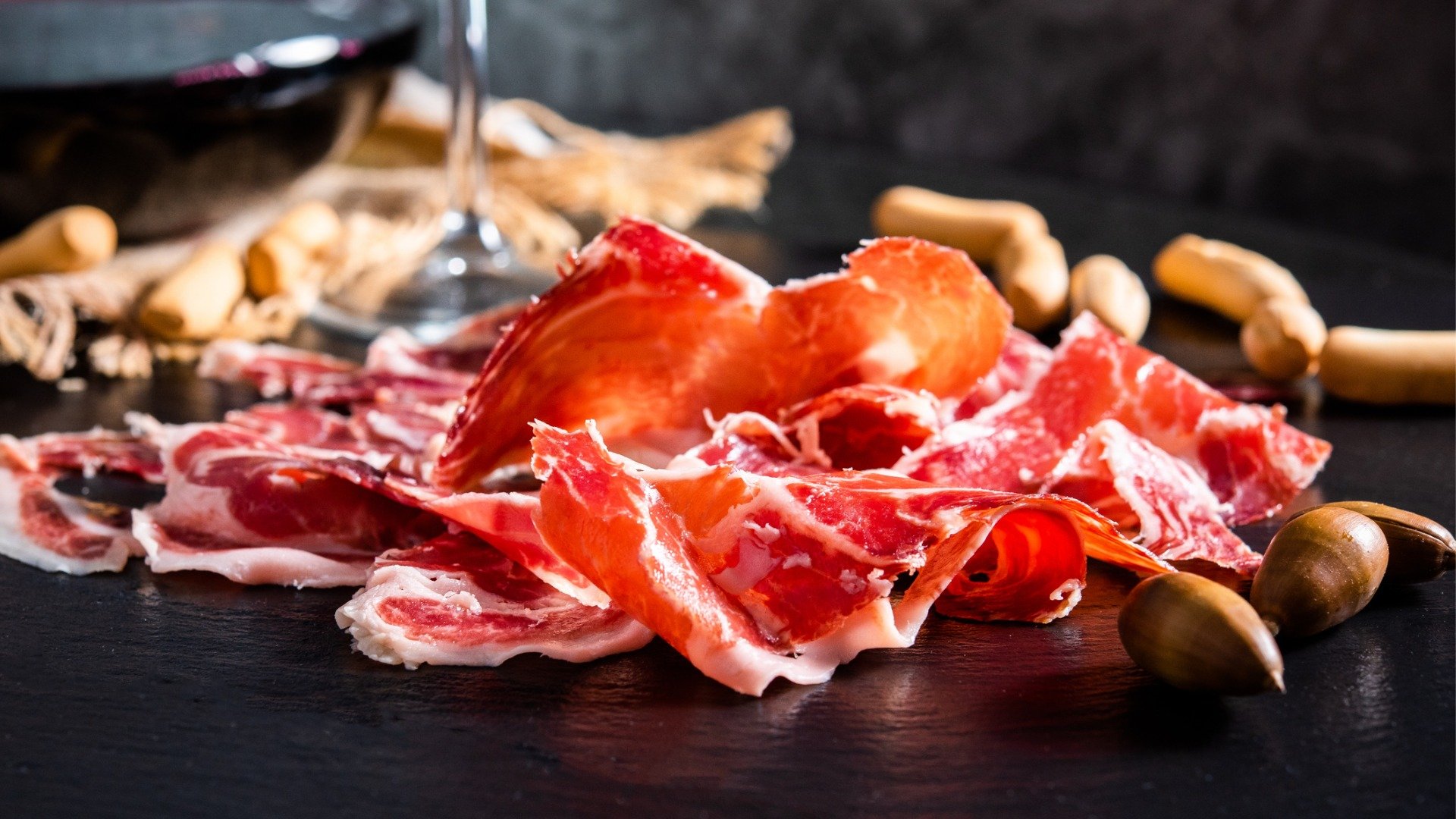
2. Gazpacho
When the temperatures swell in Southern Spain, Andalusian diners reach for a refreshing bowl of Gazpacho. This vegetarian-approved cold soup is made from ripe tomatoes, onion, garlic, and olive oil. Green peppers, cucumber, or celery are routinely added to deepen the taste and add texture. Gazpacho is consumed as a starter or a main course and it’s sometimes served hot.
The origins of Gazpacho are fuzzy but it’s thought to have been introduced when Spain was under Moorish rule. Back then, stale bread provided the base. Modern interpretations may include a slash of red wine vinegar or even watermelon for a fruity twist. Gazpacho is prominent in the region of Andalusia but it’s available throughout the country in summer.
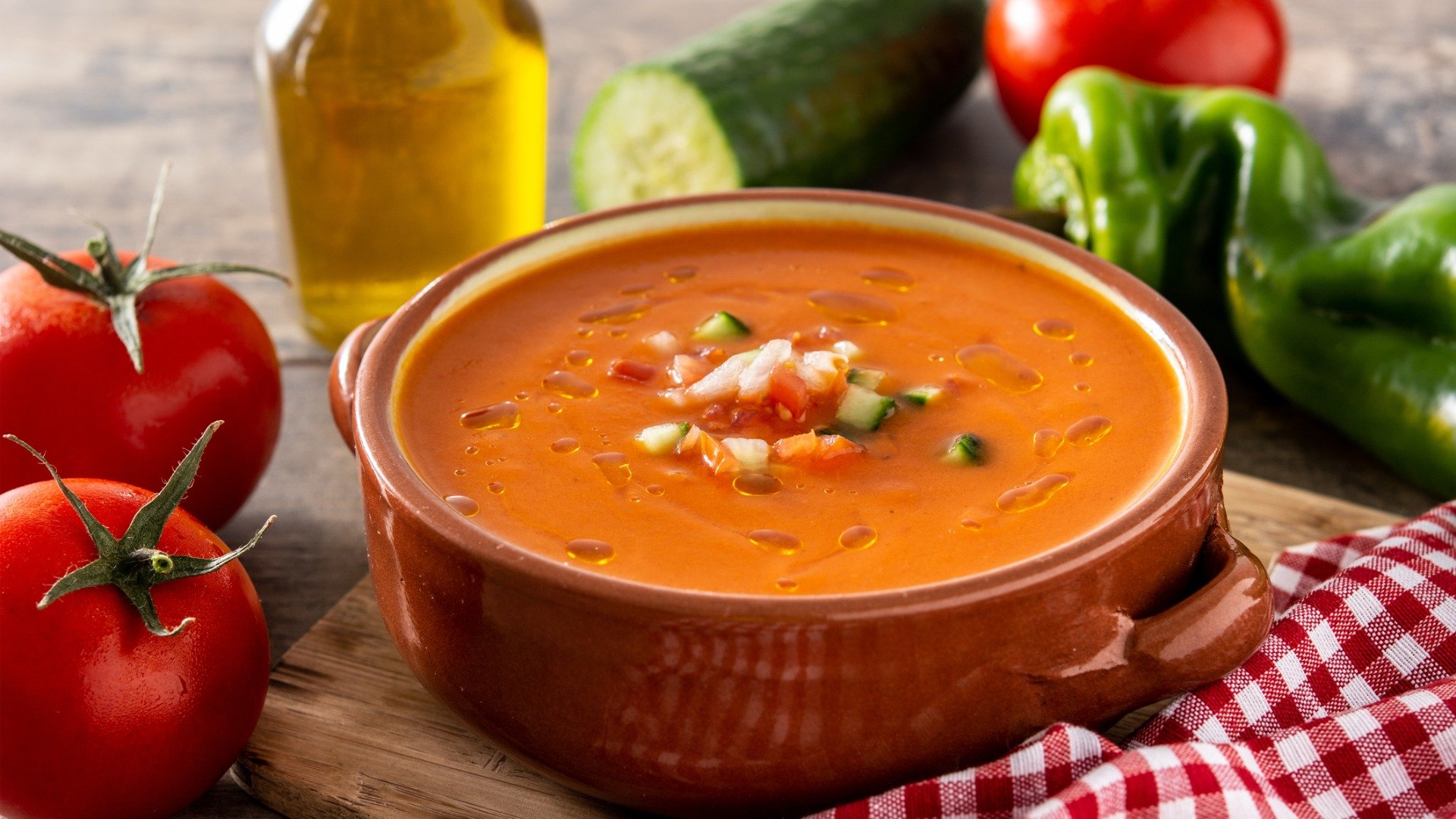
3. Caldo Gallego
Galician broth is the polar opposite of Gazpacho. This hearty soup hails from the region of Galicia in northwestern Spain and is served piping hot.
White beans, onions, garlic, and leafy or root vegetables such as cabbage, turnips, and kale are used as the base for Caldo Gallego while lard and potato add thickening. Fatty pork meats are often thrown in, with chorizo being a natural winner.
As with many traditional Spanish foods, Galician broth originated as a means of feeding farmers. It was an economical dish that provided agricultural laborers with essential nourishment and warmth in this harsher climate. Pots of Caldo Gallego simmer all year in Galician cities but it’s undoubtedly the best Spanish food to try in the winter. It’s also a lovely recipe to recreate back home.
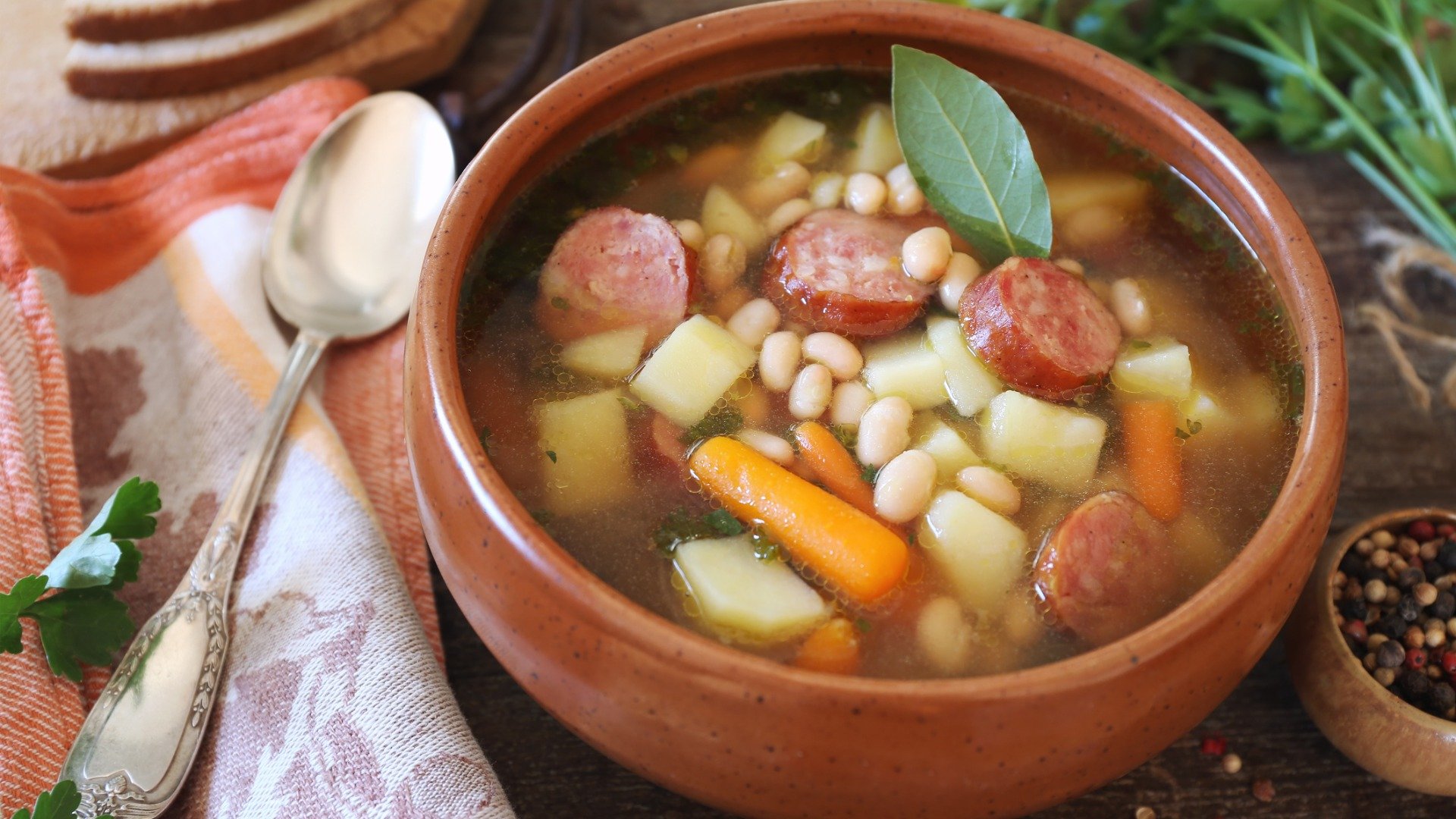
4. Tortilla Española
Of all the delectable things to eat in Spain, Tortilla Española always flies to the top of the list. The technique of layering the diced potatoes amid the beaten eggs earned the dish its name, which means small cake in Spanish.
While Spanish omelet was traditionally made with just eggs and potatoes, onions are now accepted as a third main ingredient. Some chefs embellish their Tortilla Española with extra ingredients – chorizo, jamon, flaked tuna, bell peppers, and mushrooms are some of the options. Purists might wriggle a finger at you but it’s all in the name of research.
Also known as Tortilla de Patatas, the Spanish potato omelet is recognized as a breakfast, lunch, or dinner item. It’s also a headliner in tapas and pintxos culture.
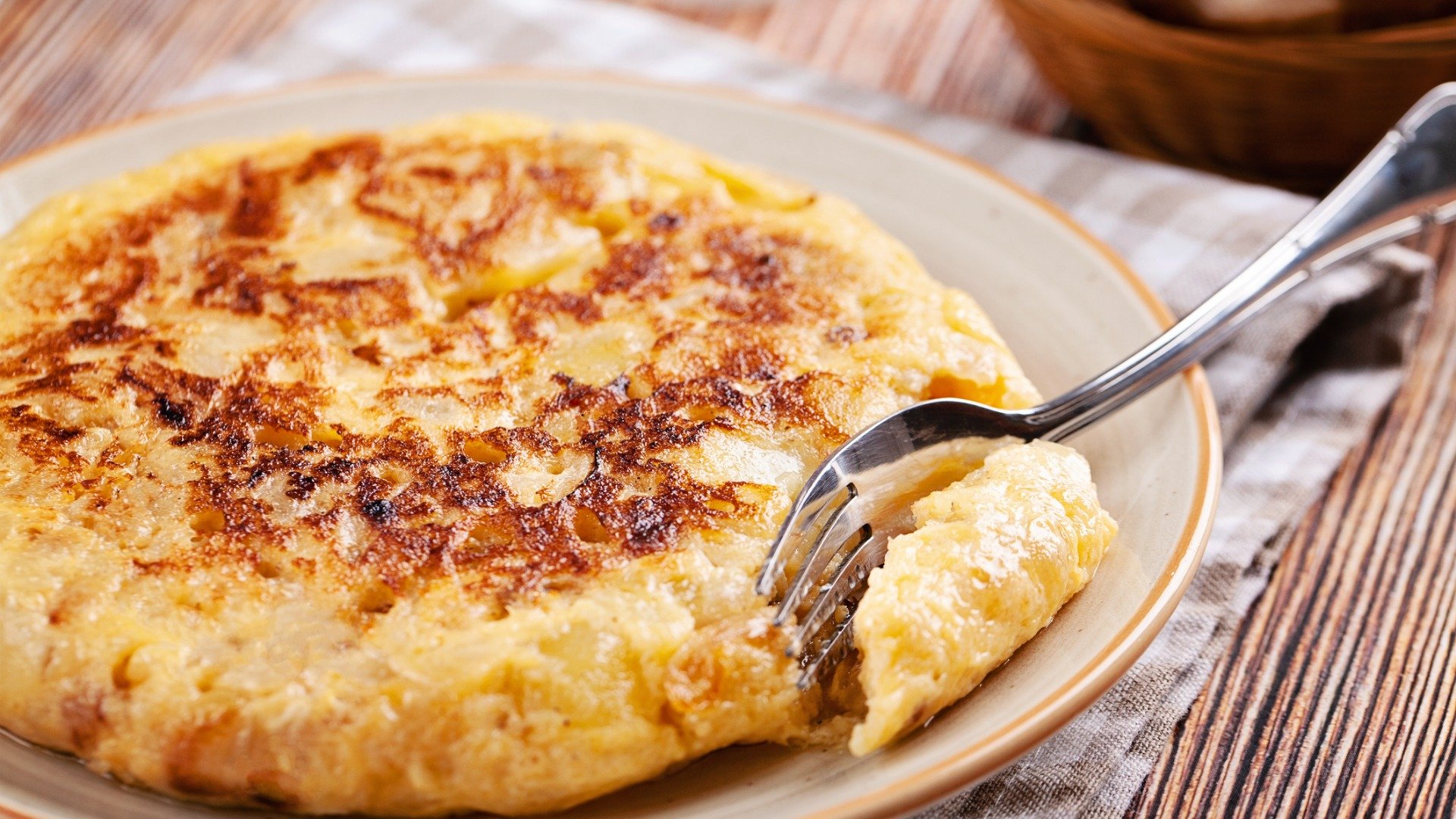
5. Bocadillos
A Bocadillo is a type of sandwich that translates into a small bite. In reality, Bocadillos are anything but small. A Bocadillo is only ever a Bocadillo when it’s fashioned from freshly baked Barra de Pan, a hefty baton similar to a baguette or ciabatta. These rustic loaves are stuffed with anything from ham, chorizo, and local cheeses to steak and Spanish omelet.
The Serranito is a popular Bocadillo in Andalusia made using Jamón Serrano, tender pork, green peppers, and either Aioli or Mojo Picon spicy sauce. In Madrid, the Bocadillo de Calamares is the most popular version of the Spanish sandwich and qualifies as the best Spanish food to try in the capital.
Sold in delis, bakeries, and cafés, Bocadillos are eaten for breakfast, lunch, or merienda. They’re best enjoyed sprawled on the lawns of one of the beautiful parks or squares that punctuate Spanish cities.
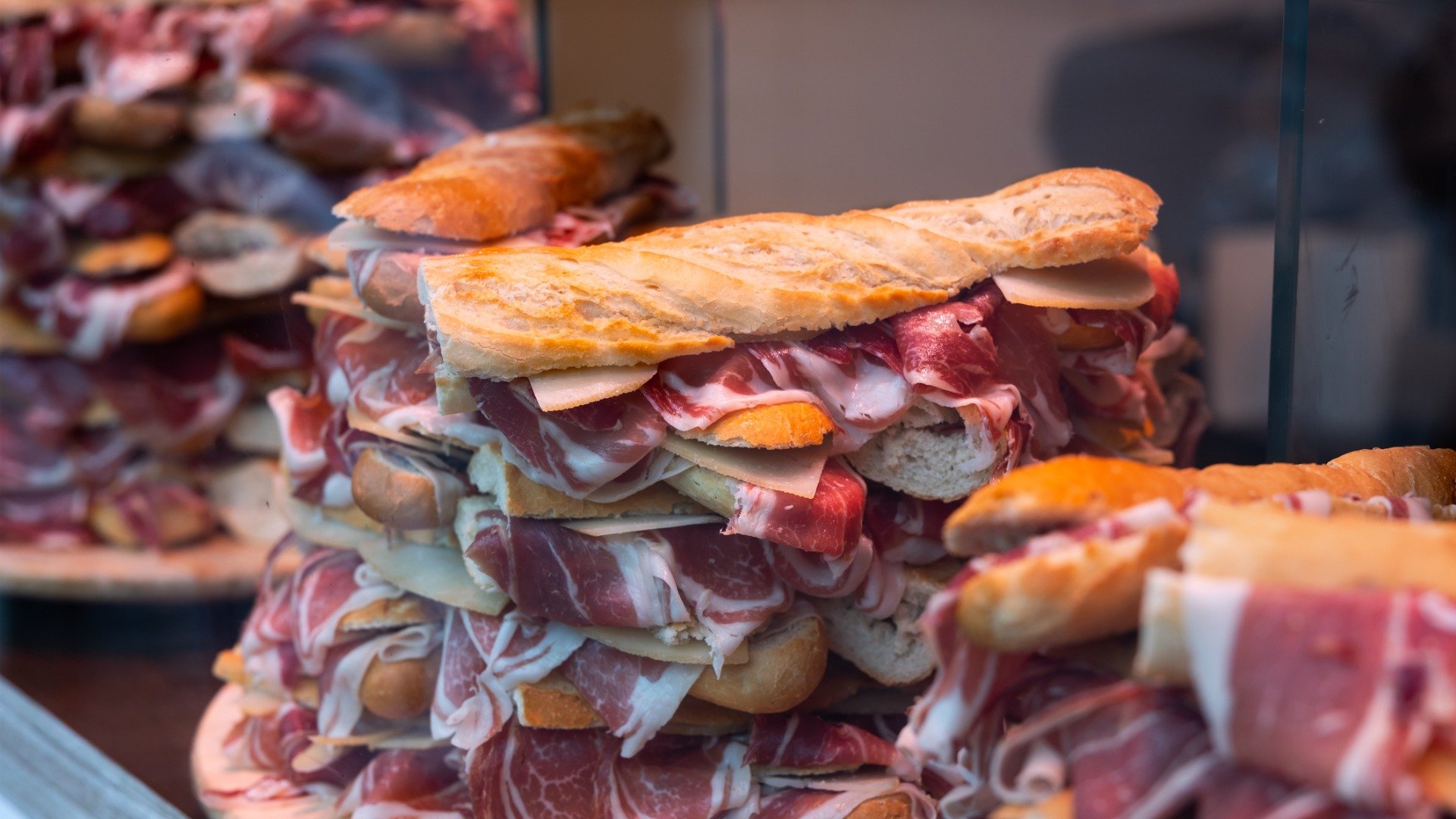
6. Paella Valenciana
Spain’s golden rice has found global success in street food markets around the world. It’s prevalent in kitchens nationwide although Valencia is the best place to devour the emblematic dish in its most authentic form.
Paella Valenciana was born at the hands of agricultural workers. Farmers would gather rogue greens from their fields to prepare a satisfying lunch over a flat-bottomed rice pan, the Paellera. Protein came from rabbit, snail meat, or possibly chicken, seasoning came from saffron or turmeric.
Paella Valenciana refers to the original recipe. Nowadays, the rice dish has blossomed into seafood Paella (Paella de Marisco) and a shellfish, chicken, and chorizo medley (Paella Mixta). Don’t forget to order a pitcher of Agua de Valencia to wash down a portion of Paella. Valencian Water is a fusion of sweet local oranges, cava, vodka, and gin.
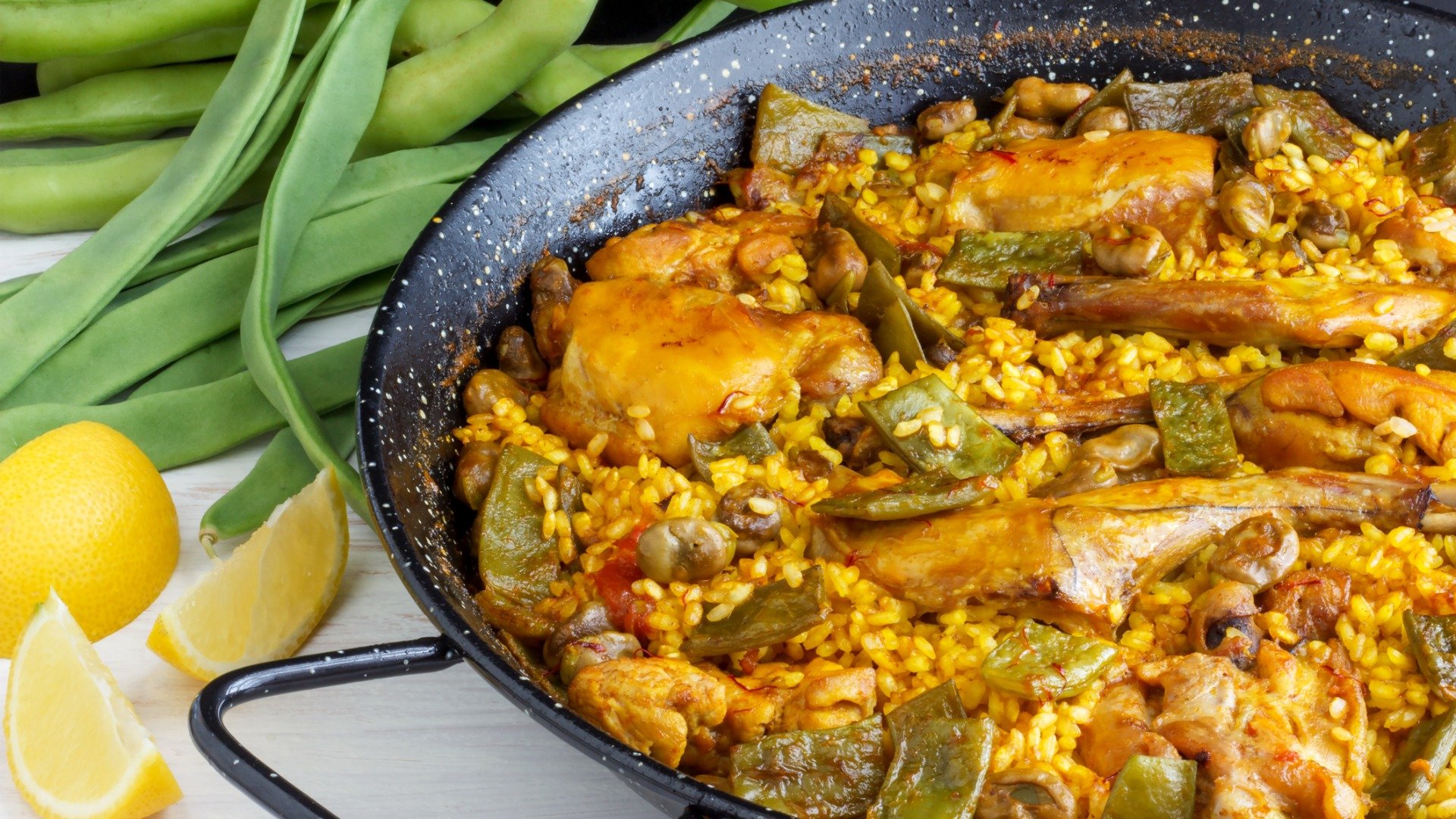
7. Gambas al Ajillo
Garlic shrimp is a classic small plate to eat in Spain. The plumpest, juiciest king prawns are sizzled with virgin olive oil, garlic, chili, and paprika to create an aromatic sauce.
Gambas al Ajillo is historically served in clay pots with a wedge of crusty bread on the side. It’s punchy without being overly spicy, and you can counteract any heat with a glass of cold white wine made from Albariño or Verdejo grapes.
This dish is readily available across the country, from the Atlantic Coast to the Mediterranean and everywhere in between. It’s a standard tapa dish but also offered as a starter or even a main course.
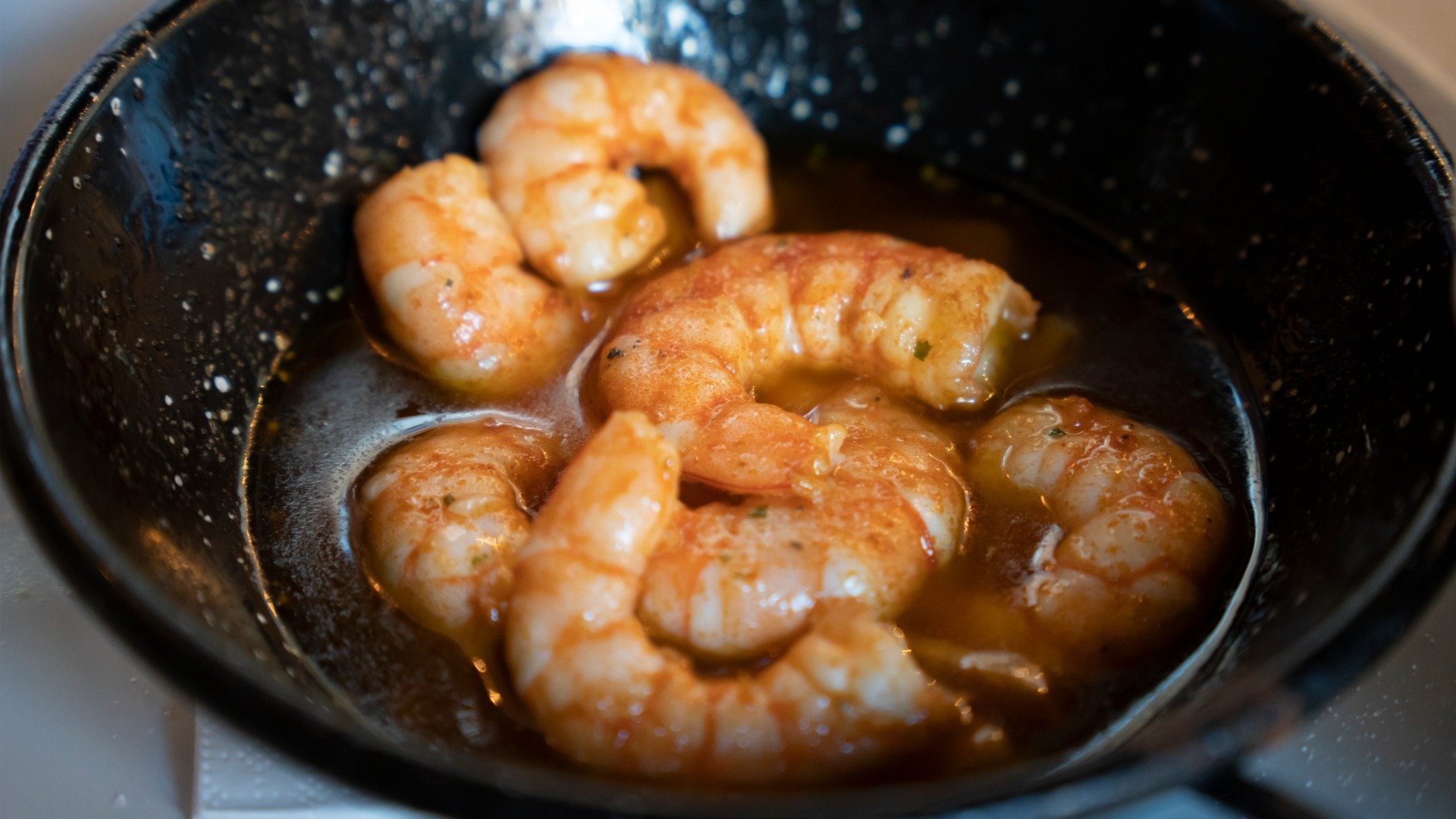
8. Escalivada
Escalivada is a powerful vegetarian starter or side dish from northeast Spain’s Catalonia region. Strips of eggplant and bell peppers are marinated with crushed garlic and extra virgin olive oil before being slow-roasted over – ideally – hot coals.
The desired outcome is that the veggies are soft in the middle and moderately charred on the surface. Hence the name. It’s borrowed from the Catalan verb escalivar, meaning to cook in ashes.
The addition of Calçots, a green onion native to Catalonia, gives Escalivada its edge. Calçots are planted in summer and ready to harvest in winter and early spring. These days, you can usually track them down year-round. Authentic Catalan Escalivada with Calçots can be found in Barcelona, Costa Brava, and rural Catalonia. It’s served hot or cold.
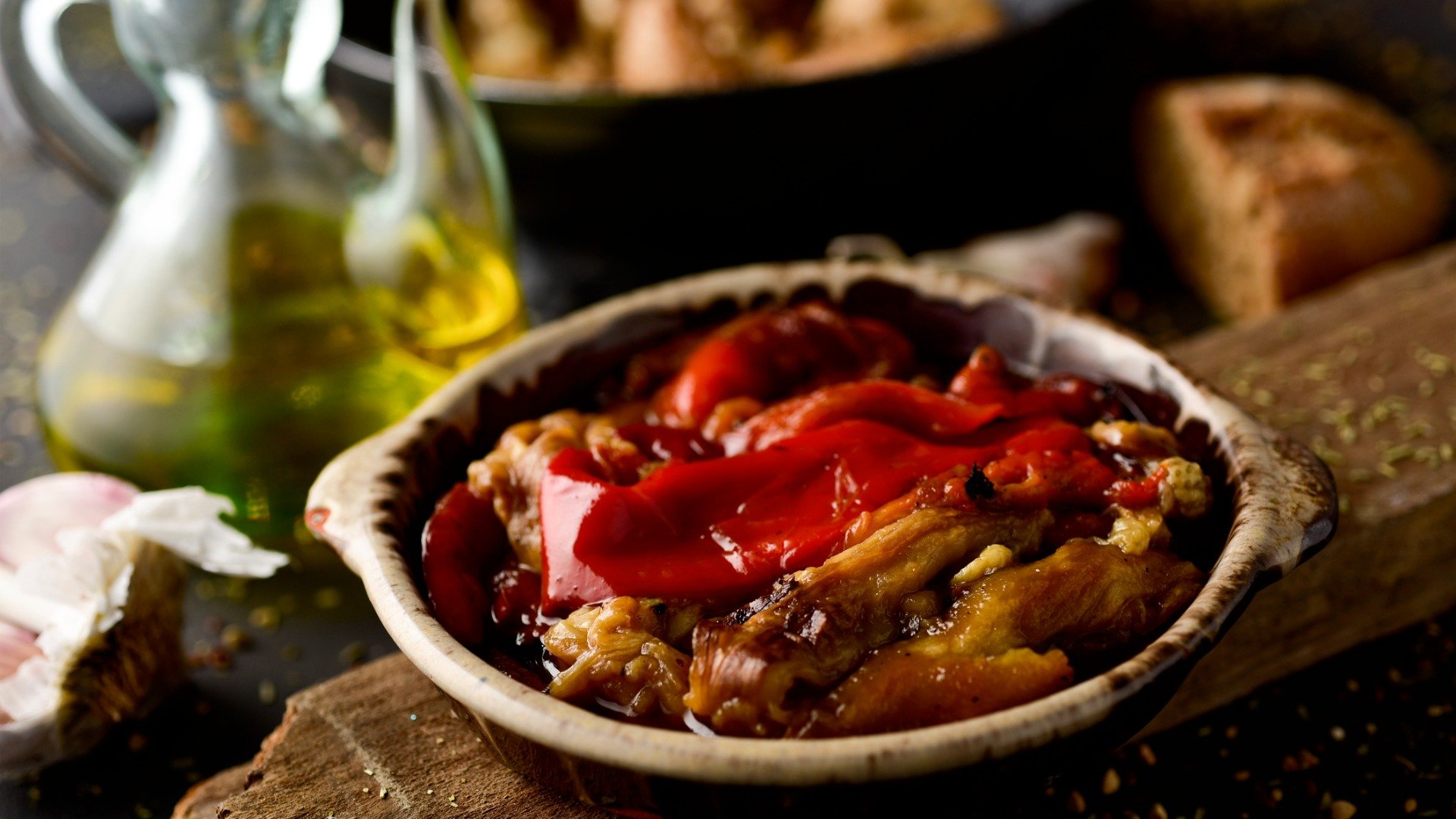
9. Churros
Fried dough dusted in sugar, then dipped into thick melted chocolate, what’s not to love about Churros? These beloved choux-pastry snacks have a complex origin story with Spain, Portugal, and China all staking a claim and versions appearing throughout Latin America and the Philippines. Regardless of where they were invented, they’re integral to the Spanish dining experience.
Spaniards tend to munch on Churros for breakfast or as a merienda pick-me-up but they’re a choice dessert, too. Churro stalls pop up all over the country, while the dough and hot chocolate dipping combination is most typical in Madrid.
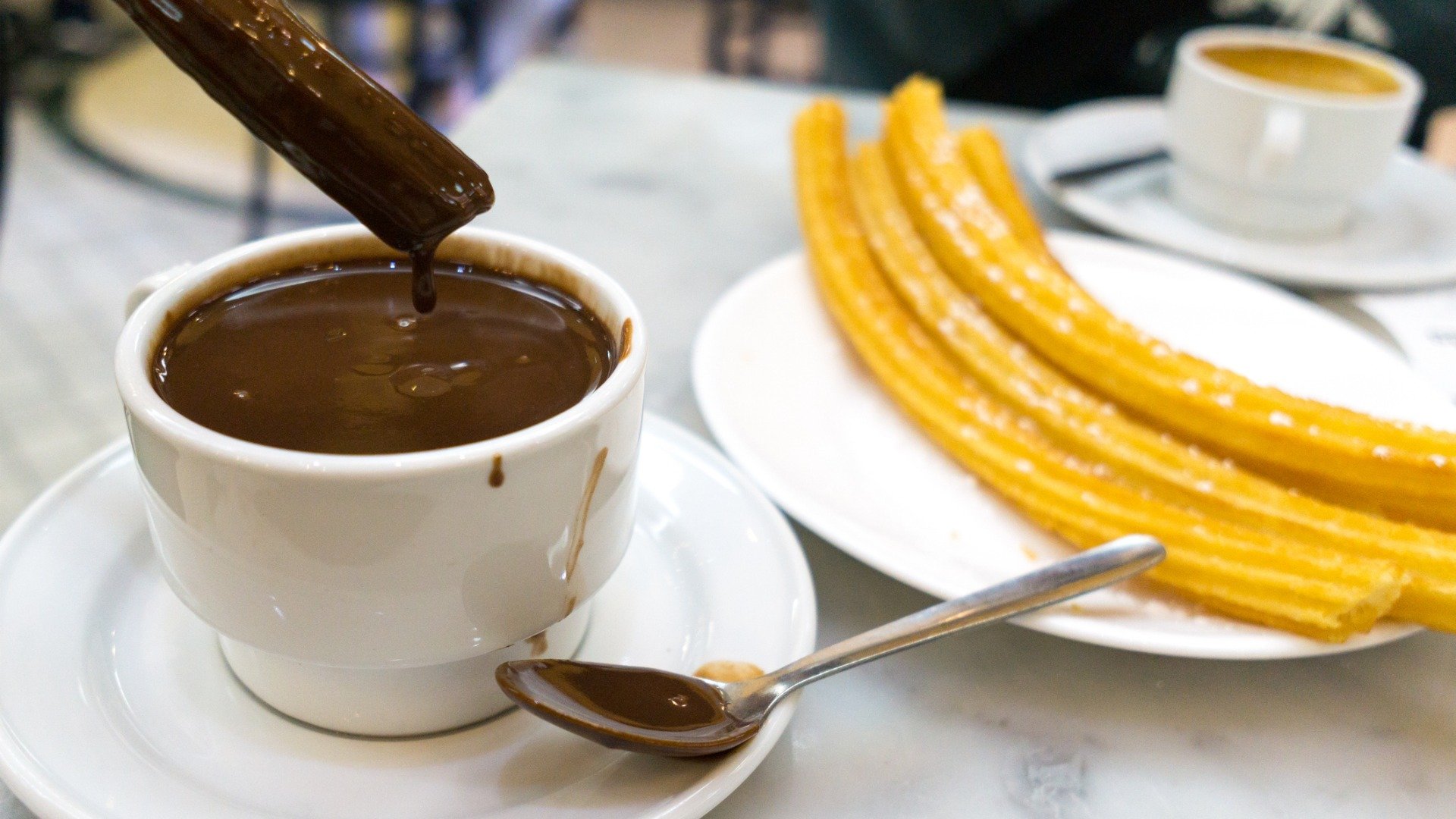
10. Espetos de Málaga
After a grueling day at sea, the fishermen of Malaga in Andalusia would round out the day by grilling freshly caught sardines from their docked boats. Times have changed and now it’s young locals and bronzed vacationers who wolf down Espetos barbecued and sold at Chiringuitos (seaside bars) and beach stalls.
Spain’s sardine season runs from April through September. Wherever there’s a sardine stand, a chilled glass of Tinto de Verano (summer red wine) shouldn’t be far away. Grilled fish is a popular merienda in the Costa del Sol in general. Apart from Espetos, look out for Boquerones (anchovies), too.
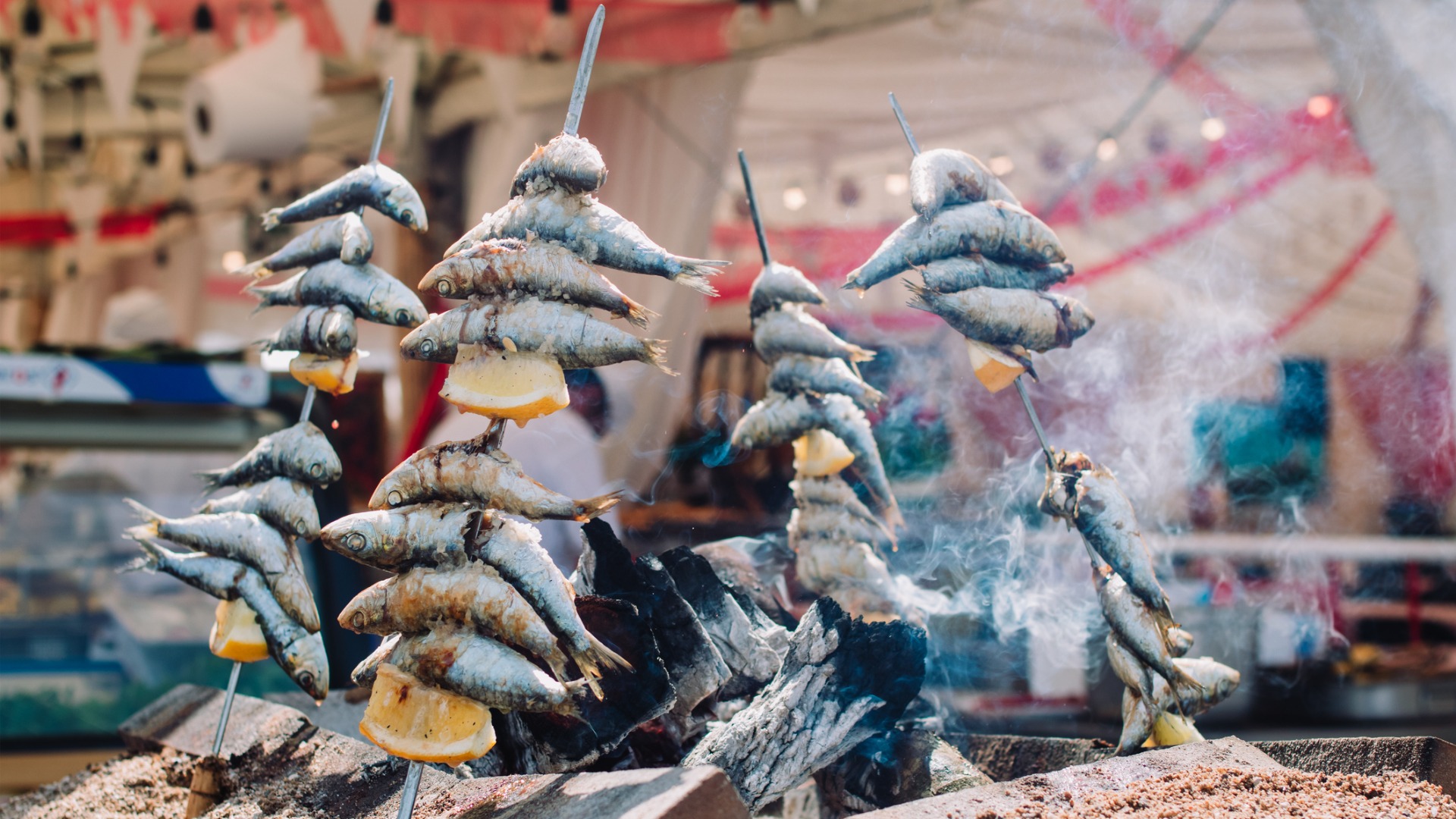
11. Lechazo
Lechazo is a traditional Spanish dish of lamb meat roasted on wood-fired stoves. The meat should be crispy and smoked on the outside and tender inside. In order to qualify as Lechazo, the lamb used shouldn’t have aged any more than 30 days. The name comes from the other stipulation: the lamb must have been solely fed on its mother’s milk – leche.
Roasted suckling lamb is a common dish in central and northern Spain and Lechazo specifically is a delicacy in the Castile and Leon region. Families gather over Lechazo and leathery Tempranillo-based wines over Christmas and holidays.
If Lechazo strikes a chord, Cochinillo Asado (roasted suckling pig) is another Spanish meat specialty to look out for at restaurants in Segovia and Madrid.
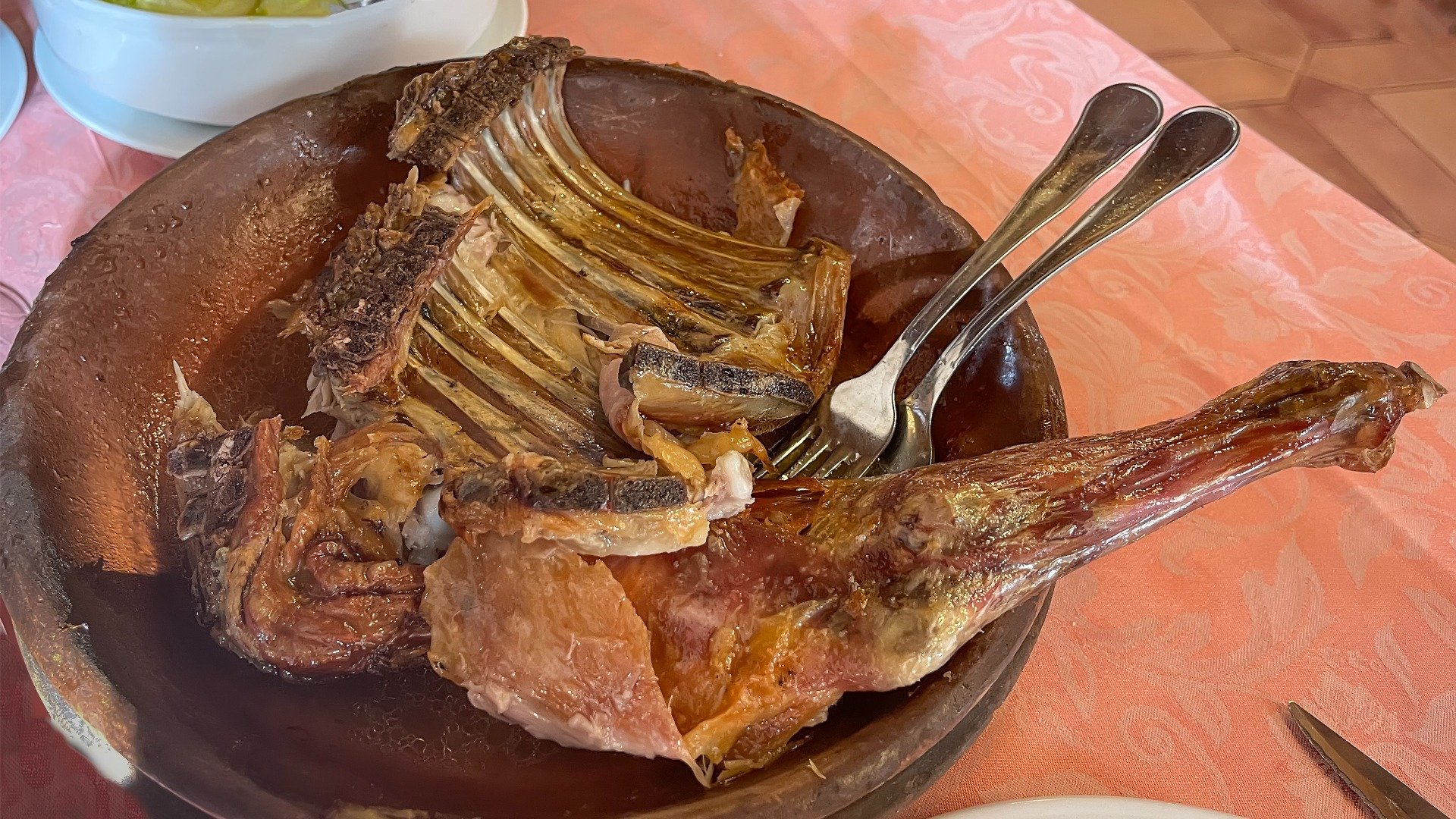
12. Bacalao al Pil-Pil
Bacalao al Pil-Pil is a rich fish dish to eat on Spain’s Atlantic coast. It originates from the Basque region and contains only three ingredients: salted cod, garlic, and olive oil. Pil-Pil refers to the sound the sauce makes as it thickens and emulsifies.
There’s a technique to Pil-Pil that takes practice. Stirring too little or too much will impact the emulsification process and yield a less creamy sauce. It’s a dance of art and science best left to the pros. Bacalao al Pil-Pil was conceived by sailors out of a need to figure out a way to preserve fish and satisfy their calorie count during long sea voyages.
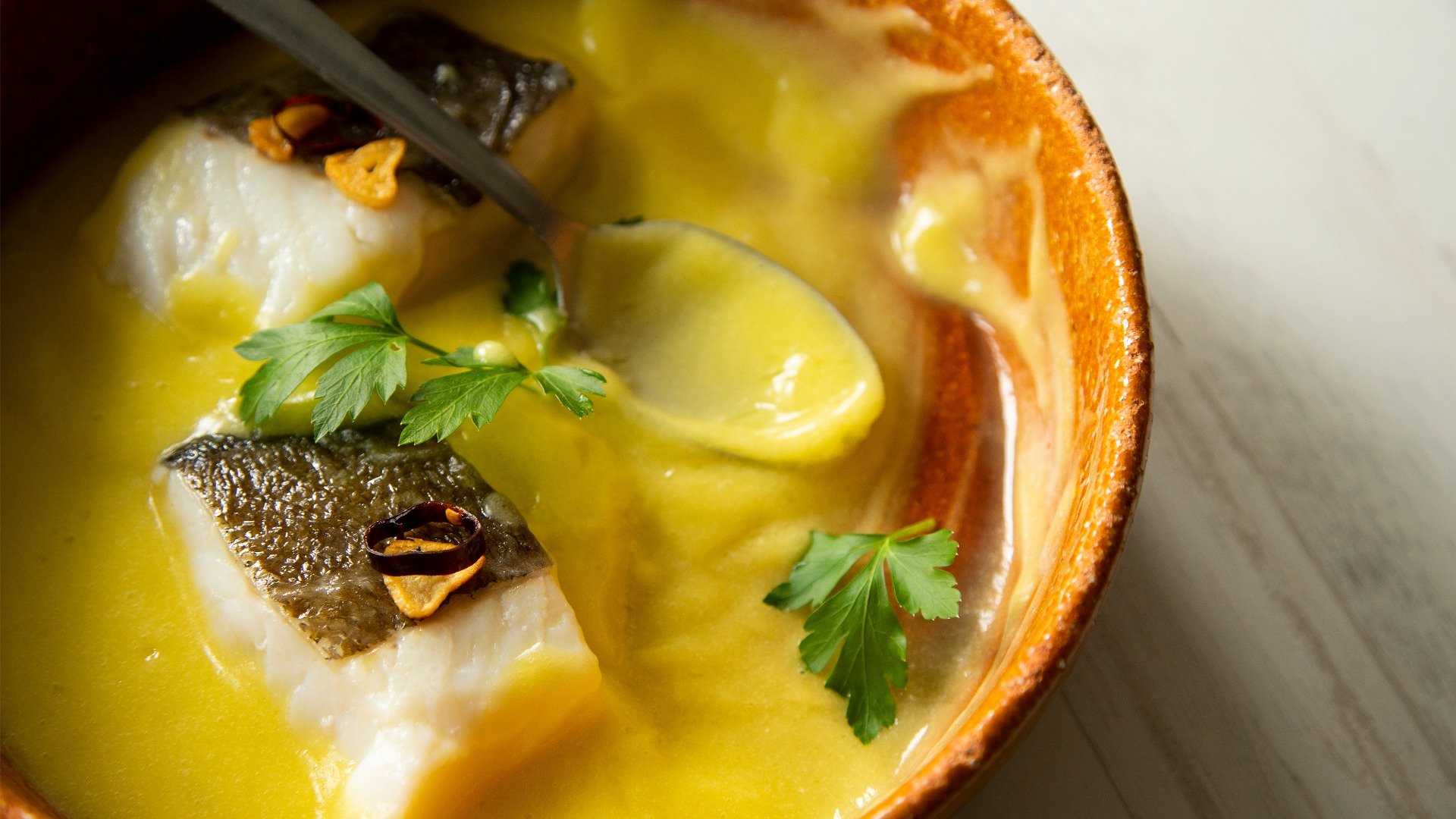
13. Espinacas con Garbanzos
Espinacas con Garbanzos – or spinach with chickpeas – is a wholesome stew packed with flavor. It’s typical of Andalusian cooking and is popular as a tapa, side plate, or starter in Seville.
Onion, garlic, and tomatoes are sautéed with cumin and paprika in olive oil to provide a fragrant sauce. Once the chickpeas and fresh spinach are added, the stew is tasty enough to polish off.
Variations of the traditional recipe may include additional vegetables, a sprinkling of soft cheese, or a handful of nuts and raisins. The former in particular reflects North African influences on southern gastronomy. It’s also a practical means of using up wilting veggies – you can definitely try this one at home.

14. Esqueixada
Esqueixada is a traditional Catalan fish plate likened to the ceviche of Peru and Pacific Latin America. The recipe for Esqueixada mixes salt-cured cod marinated and left to cook in chopped tomatoes, red onions, olive oil, and lemon juice. Hard-boiled eggs are frequently added for more subsistence and black olives provide the garnish.
The name heralds from the Catalan verb esqueixar meaning to tear. Knife-chopped cod doesn’t come close to capturing the magic of this summer staple.
Esqueixada makes for a scrumptious lunch or light dinner dish during the hot summers in Barcelona and the Costa Brava. Pair a portion of Esqueixada with a glass of Spanish cava and a Mediterranean view.
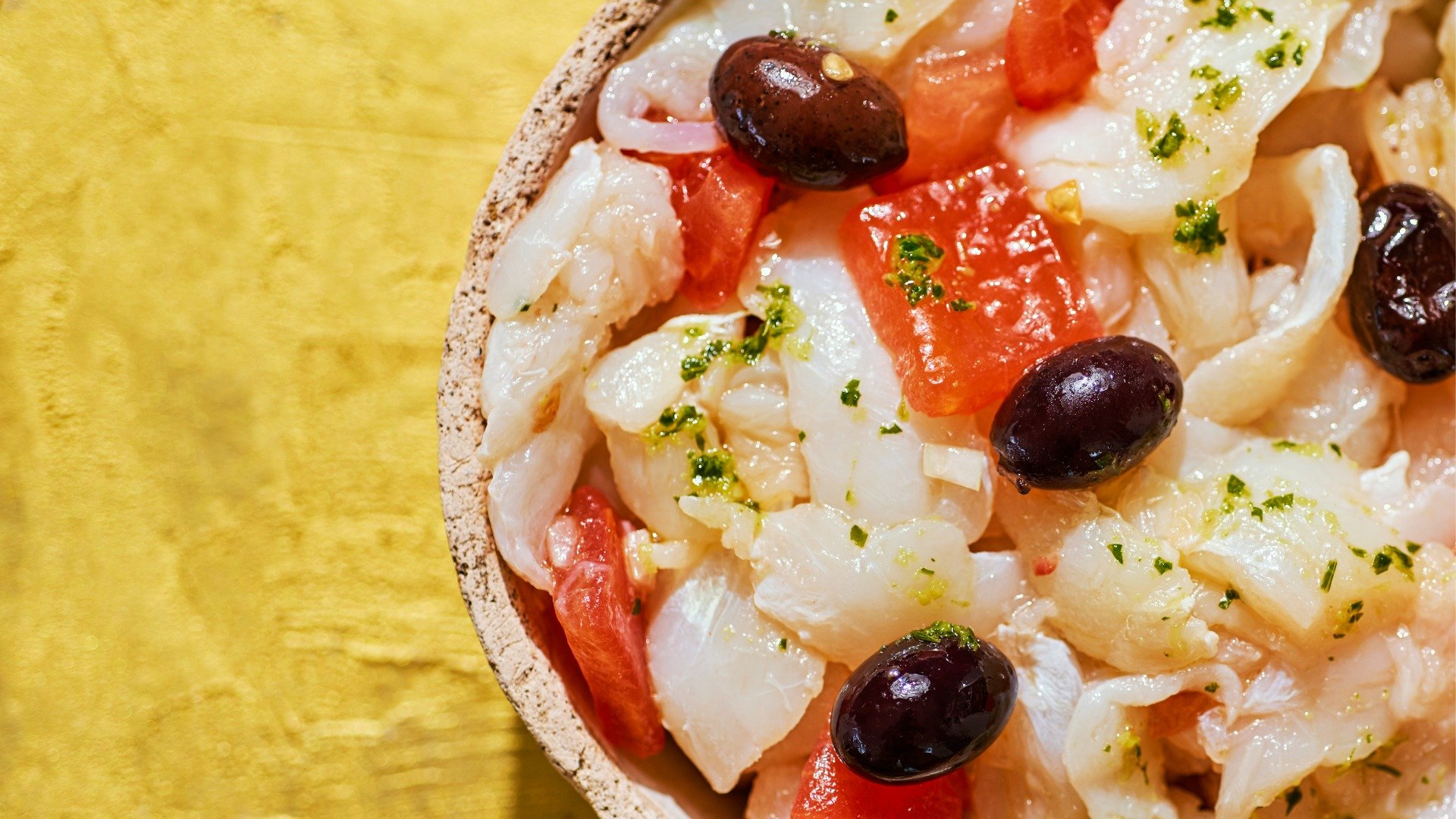
15. Basque Burnt Cheesecake
Signing off with something sweet, one of the best desserts to eat in Spain made its debut in recent years, in the 1980s. Before the chef Santiago Rivera broke new ground, cheesecake wasn’t commonplace in the Basque Country.
Rivera conceived the pudding in his family-owned restaurant, La Viña, in the heart of San Sebastian. It’s now baked in ovens throughout Europe and worldwide although experiencing how the original formula holds up is a rite of passage for epicurean adventurers.
The classic Basque Burnt Cheesecake contains only five ingredients: cream cheese, eggs, cream, sugar, and a dash of flour. The scorched topping is achieved quite literally by blasting the mixture at a high temperature for a short time. Locals will insist you sip a glass of sherry on the side.
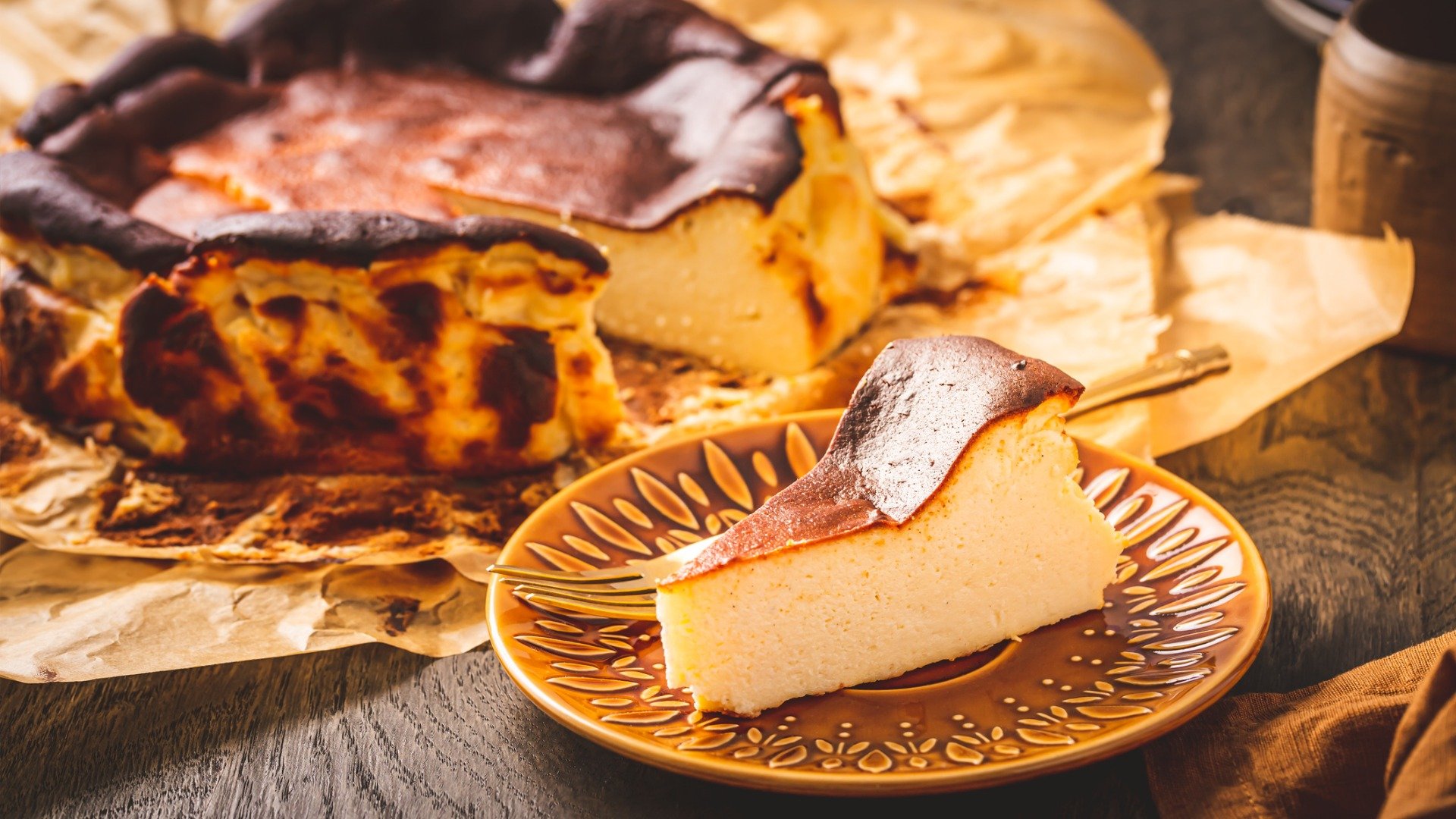
Taste The Best Spanish Food With JayWay
Here at JayWay Travel, we know that sampling local food is an essential part of traveling. In this spirit, we wouldn’t be crafting the best tailor-made itineraries across Europe without drizzling them with the most delicious culinary tours and activities.
From cooking classes to gastronomic walking tours, we’ve handpicked high-quality experiences to ensure you get a good taste of the best Spanish food even if you’re only visiting Spain for a couple of weeks – or less. So, if you’re ready for a flavorful trip across Spain, get in touch and we’ll be more than happy to create a custom Spain itinerary just for you.

Born and raised in Athens, Maria’s passionate about travel and storytelling, a combination that makes her ideal for her role as our content manager.